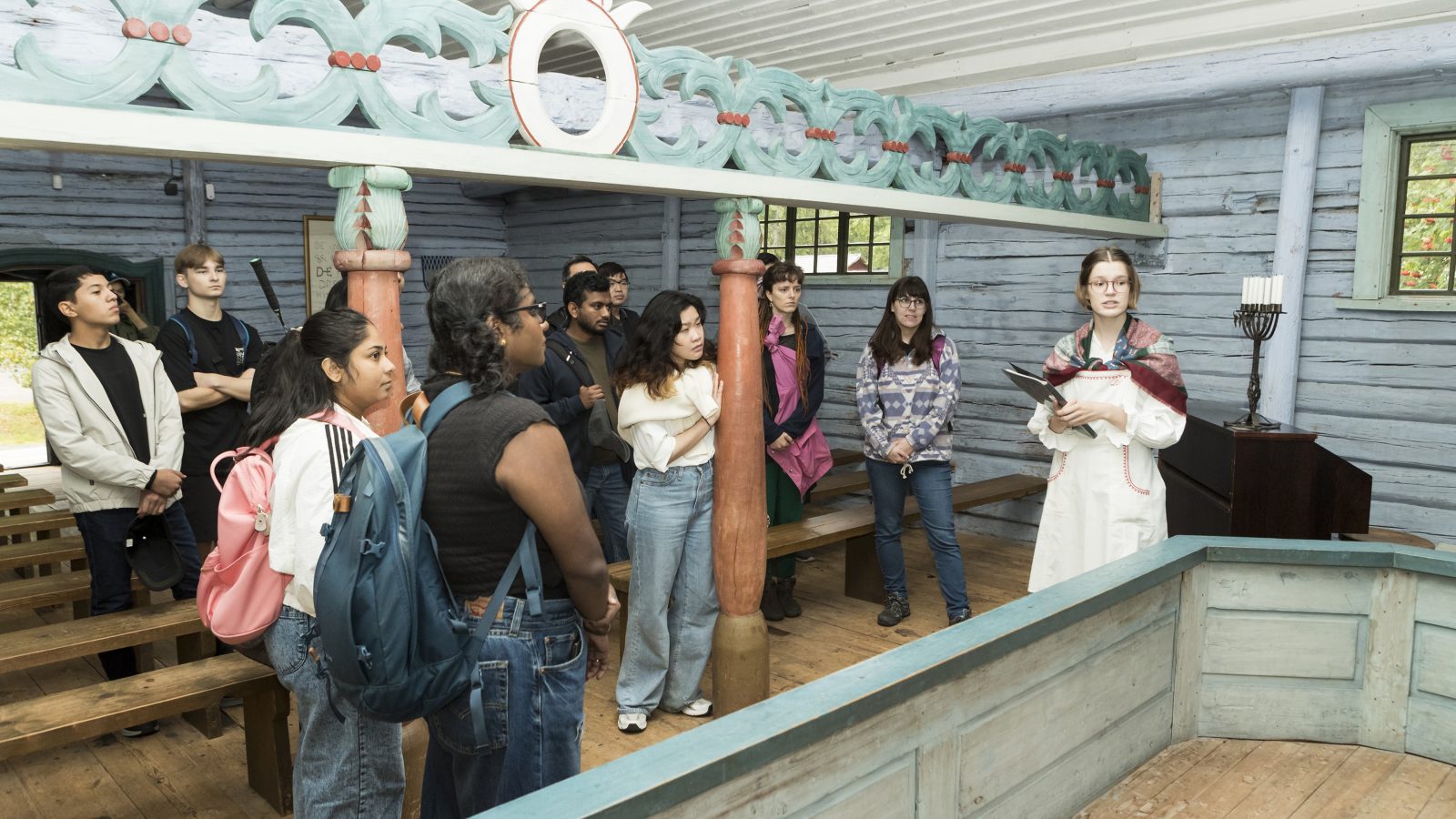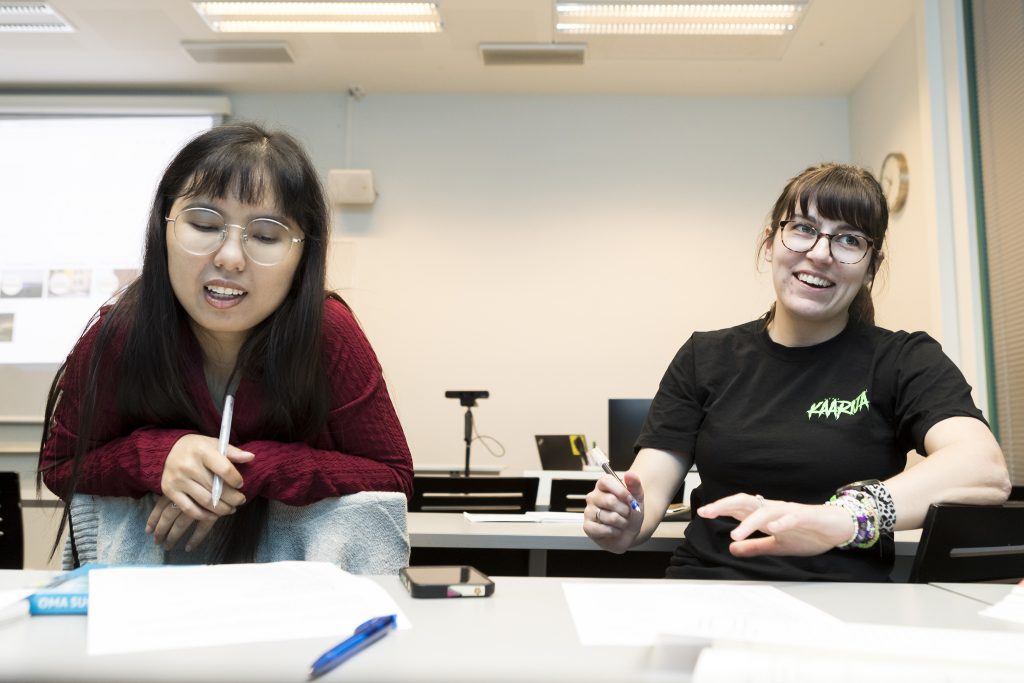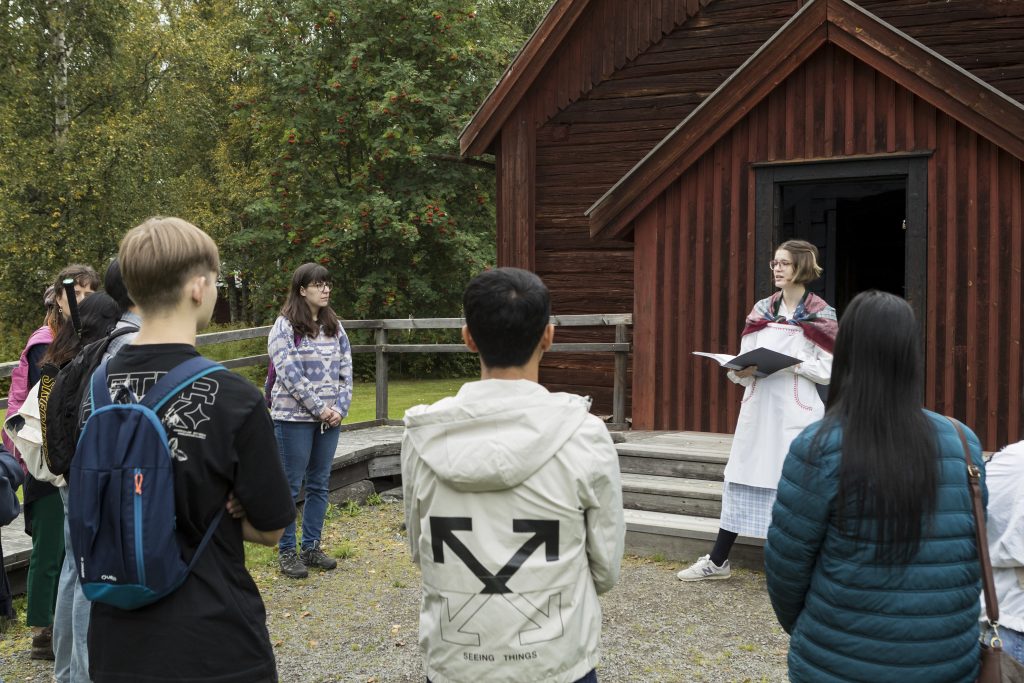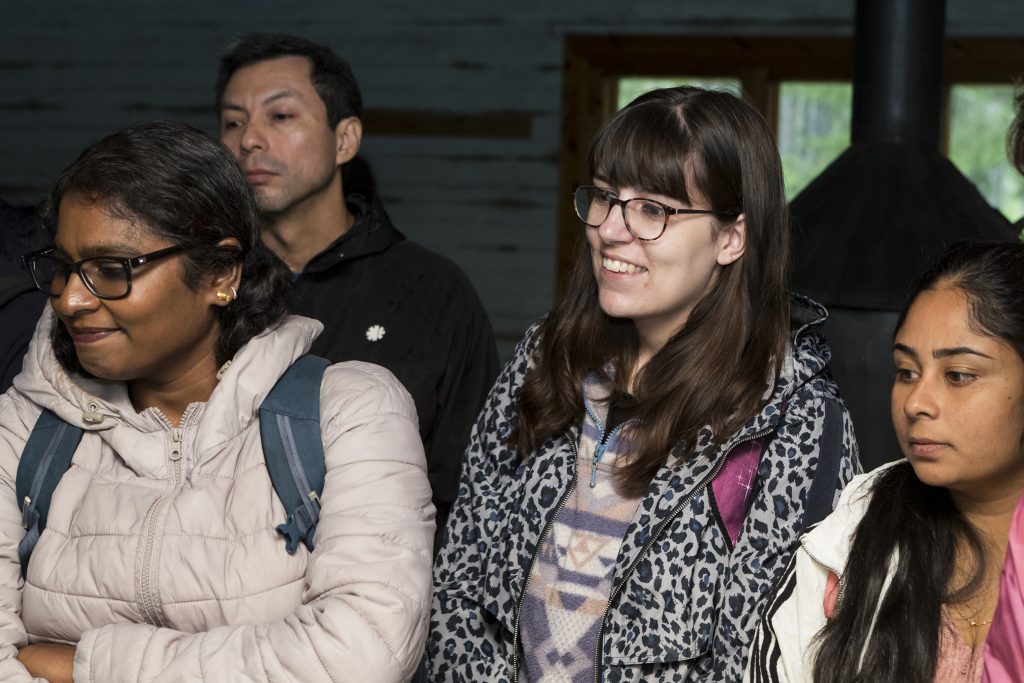My Oulu: How to tackle Finnish in a four-week crash course

Guide Tiia Aitto-oja recounts the history of the active church that is located in the Turkansaari Open Air Museum to the international students who are learning Finnish in a month-long crash course at the University of Oulu. Photos: Janne-Pekka Manninen
Day trips to Turkansaari Open Air Museum, baking blueberry pie and placing an order at a café in downtown Oulu are all ways for international students to immerse themselves in Finnish at the University of Oulu. A month-long deep-dive into the Finnish language has proved to be highly popular – and beneficial – among new students.
Sophie Platt, a Master’s degree student from England introduces herself in fluent Finnish, rolling her r’s as she cheerfully says ‘Terve!’, that ubiquitous Finnish greeting.
Platt is one of the new international students at the University of Oulu who are taking a month-long intensive language course in Finnish before the rest of their studies start in September. The course is intended to give international students an opportunity to pick up the language at a faster pace than usual: the entire semester’s language studies, Survival Finnish and Beginner Finnish 1, are packed into mere four weeks.
This might seem like quite the plunge into a notoriously difficult language, but Platt is enjoying herself.
“I have been to Finland a few times before to go to concerts and I’ve used Duolingo to learn quite a bit of Finnish. The course is really nice and very helpful because you learn grammar and all the rules and understand why things are the way they are,” Platt says, wearing a Käärijä t-shirt that gives away her fondness for Finnish music.

Quynh Anh Nguyen (left) and Sophie Platt are learning to introduce themselves and explaining what they are studying in Finnish in the Kickstart classroom at the University of Oulu.
Platt says the course has also been a way for her to make new friends in a new country and a new environment. There are many nationalities among the 50 participants, including students from Iran, Peru, Poland, Sri Lanka, Pakistan and Germany.
The course is not confined to only learning the basics of Finnish in a classroom, as the Kickstart UniOulu programme makes a point of taking the students out into the real world to practice the language in an actual setting. The students take field trips to places like the Sailor’s Home Museum in Pikisaari or the Turkansaari Open Air Museum. They also do everyday things like go to a grocery store.
“We’ve baked mustikkapiirakka [blueberry pie] and korvapuusti [cinnamon bun] together, which have been wonderful introductions to Finnish culture. I sent photos of me baking to my Finnish friends and they said that’s what everybody does in Finland,” Platt says.
Finnish is expected in the workplace
The first Kickstart course was organised by the Centre for Languages and Communication Lingua and Talent Boost at the University of Oulu in the fall of 2023. In addition to immersing international students in Finnish culture and easing their everyday life in Oulu, the course is trying to address the issues around possible future employment, says teacher Heidi Niskanen from the University of Oulu.
“It is crucial for somebody to start early if they want to advance their language skills. Finnish is a requirement in the job market even if many Finnish people speak English and many workplaces have international employees. We start by teaching the students how to introduce themselves in Finnish, how to tell people what they are studying, and eventually we move on to learning how to write a résumé in Finnish”, Niskanen says.

Sophie Platt (left) observes as guide Tiia Aitto-oja gives the UniOulu Kickstart students a tour of Turkansaari Open Air Museum, explaining the local history of Oulu the group.
In many international Master’s programmes at the university the basic Finnish courses are mandatory. At the same time, an international Master’s programme in Oulu lasts typically only two years, which is not a lot of time to learn a language, especially with the rest of the courses running concurrently.
“The Kickstart is four hours a day, three days a week for four weeks and the students have no other courses going on at the same time. We got very positive feedback from last year and many of those participants signed up for advanced Finnish courses after the crash course”, Niskanen says.
Motivation is key
Kanchana Kumari, a Sri Lankan student who is enrolled in the Software Engineering and Information Systems programme, participated in the first ever UniOulu Kickstart course in 2023. After the course she took the second beginner and the first intermediate courses in Finnish.
“They were very easy for me after the strong foundation I built in Finnish during the intensive course. I am planning to take more Finnish classes as I go on,” Kumari enthuses.
Like Sophie Platt, Kumari is also a fan of Finnish music – Behm in her case – and she has plans to study and work in Finland.
“I would love to get a job in Finland in the long term, and employers still prefer Finnish. I don’t think the language is too difficult to learn, especially if you are motivated. I am building my vocabulary by watching cartoons in Yle Areena and by listening to the news,” Kumari says.

Priya Karthikeyan (left), Marco Velapatiño Gamarra, Sophie Platt and Pramodi Samaratunga at a field trip in the Turkansaari Open Air Museum. The field trips have been popular with the UniOulu Kickstart students, as they expand their understanding of Finnish and Oulu culture.
Learning grammar and vocabulary by yourself is a different thing compared to having an actual conversation in an actual setting. However, the more you learn, the more confident you get, says Sophie Platt.
“In a coffee shop queue I would rehearse the Finnish phrases in my head and then I would immediately switch to English as soon as the person behind the counter in a coffee shop said ‘Moi’ to me. Now I am a bit more brave,” Platt says with a laugh.
Platt’s persistence in learning Finnish stems from all the usual things like managing everyday life and being able to understand, for instance, the signs in public places. She also has a more personal desire to learn the language.
“I would love to go to a concert and understand not only the lyrics of all the songs, but all the artists’ chats in between the songs. And it would be lovely to be able to speak to other fans in Finnish,” Platt says.